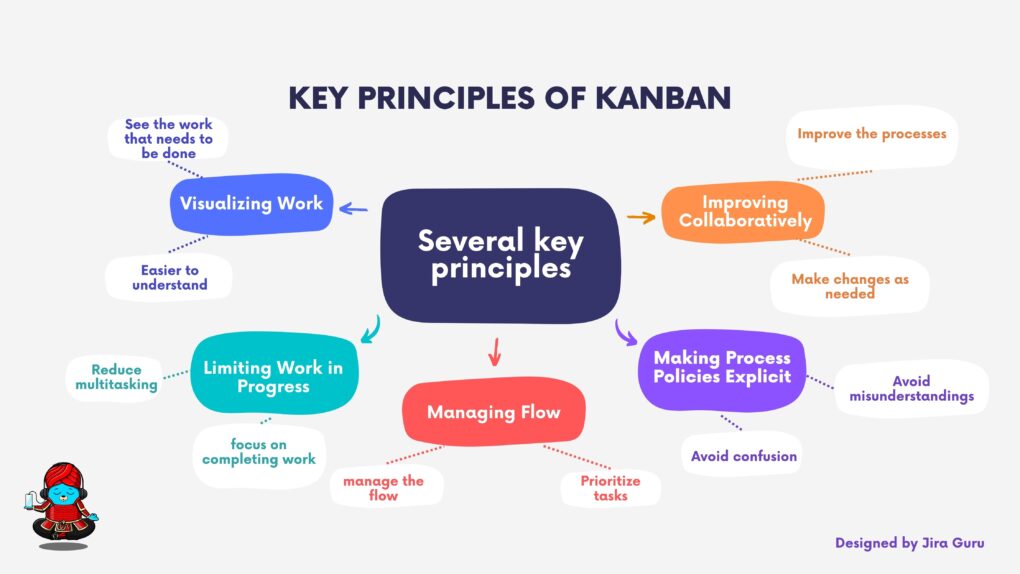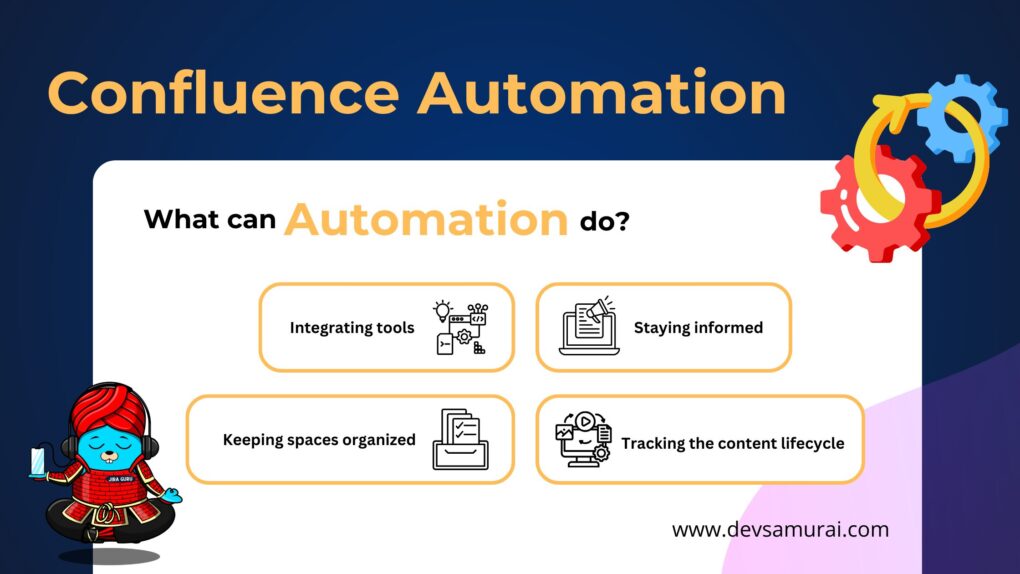
Kanban is a visual project management framework that has been used in manufacturing, software development, and healthcare for many years. It was originally developed in Japan for use in the Toyota automotive plant, and it has since been adopted by teams all over the world. If you’re looking to improve your workflow, prioritize tasks, and collaborate more effectively, then Kanban might be the right framework for you. In this article, Jira Guru will explain what Kanban is, how it works, and the benefits of using it.
What is Kanban?
Kanban is a project management framework that is based on the principles of Lean manufacturing. It uses visual boards to represent the work that needs to be done, and it helps teams to manage the flow of work and to prioritize tasks.
The boards can be physical boards or digital boards, and they typically have columns that represent the different stages of a project.
How Does Kanban Work?
Kanban works by using a visual board to represent the work that needs to be done. The board typically has columns that represent the different stages of a project, such as “To Do,” “In Progress,” and “Done.” Teams add cards or sticky notes to the board to represent work items, and they move these items through the different stages as they are completed.
The key to using Kanban effectively is to limit the amount of work that is in progress at any given time. This helps to reduce multitasking and to ensure that the team is focused on completing each task before moving on to the next. Teams can also use the board to prioritize tasks and to ensure that they are always working on the most important items.
Key Principles of Kanban

Kanban is based on several key principles that help teams to work more effectively:
- Visualizing Work: The visual nature of the Kanban board helps teams to see the work that needs to be done, the progress they are making, and any potential bottlenecks. This makes it easier to understand what is happening in the team and to identify areas that need improvement.
- Limiting Work in Progress: Kanban encourages teams to limit the amount of work they have in progress at any given time. This helps to reduce multitasking and to focus on completing work before starting new work.
- Managing Flow: The pull-based system used in Kanban helps teams to manage the flow of work and to prioritize tasks based on the team’s capacity and priorities.
- Making Process Policies Explicit: Teams can use the Kanban board to make their process policies explicit. This helps to ensure that everyone is following the same process and to avoid confusion or misunderstandings.
- Improving Collaboratively: Kanban encourages teams to continuously improve their processes. Teams can use the board to identify areas that need improvement and to make changes as needed.
How to Apply Kanban in Different Areas of Work?
Kanban can be applied in a variety of different areas of work, including software development, manufacturing, and healthcare. In each area, the principles of Kanban are the same, but the specific applications may vary.
- Software Development: In software development, teams use Kanban boards to manage the flow of work and prioritize tasks. Teams can add stories or tasks to the board and move them through the different stages as they are completed. This helps to ensure that the team is always working on the most important tasks and that work is flowing smoothly.
- Manufacturing: In manufacturing, teams use Kanban boards to manage the flow of materials and parts. The boards help teams to understand what is happening in the factory and ensure that work is flowing smoothly. Teams can add work items, such as parts or materials, to the board and move them through the different stages as they are completed.
- Healthcare: In healthcare, teams use Kanban boards to manage the flow of patients and medical procedures. The boards help teams to prioritize tasks, manage patient flow, and improve collaboration between different departments. Teams can add patient cases to the board and move them through the different stages as they are completed, helping to ensure that patients receive the best possible care.
Benefits of Using Kanban
There are several benefits to using Kanban, including:
- Improved Workflow: Kanban helps teams to manage their work more effectively and to ensure that work is flowing smoothly. This helps to reduce bottlenecks and to improve overall productivity.
- Increased Transparency: The visual nature of the Kanban board makes it easier for teams to understand what is happening in the team and to identify areas that need improvement.
- Better Prioritization: Kanban helps teams to prioritize their work and to focus on the most important tasks. This helps to ensure that the team is always working on the most critical items and to avoid wasting time on lower-priority tasks.
- Improved Collaboration: Kanban encourages teams to work together and to improve their processes collaboratively. This helps to ensure that everyone is on the same page and to reduce confusion or misunderstandings.
- Enhanced Communication: Kanban boards help to facilitate communication between team members by making it easy to see what others are working on and what their priorities are. This can help to avoid duplicating efforts and can encourage teamwork.
- Reduced Lead Time: By limiting the amount of work that is in progress at any given time, Kanban can help to reduce lead time and improve the overall speed of a project.
- Increased Visibility: Kanban boards give teams a clear visual representation of their work and the progress they have made. This can help to keep everyone on the same page and to keep everyone motivated.
- Flexibility: Kanban is flexible and can be adapted to meet the needs of different teams and projects. It can be scaled up or down, and it can be used for both small and large projects.
Kanban is a visual project management framework that has been used in many different industries, including software development, manufacturing, and healthcare. It helps teams to manage the flow of work, prioritize tasks, and collaborate more effectively. With its benefits, including improved workflow, increased transparency, better prioritization, improved collaboration, enhanced communication, reduced lead time, increased visibility, and flexibility, Kanban can be a valuable tool for any team looking to improve its workflow and increase its productivity.
About DevSamurai
DevSamurai is a Global IT service company that provides DevOps solutions for Jira, Atlassian and more… using cutting-edge technology to its growing customer base. DevSamurai is customer-centric and helps clients to leverage the power of IT to improve their business. DevSamurai use cloud computing platforms, DevOps tools, and best practices in global industry standards to guarantee the efficiency of their clients’ organization.
If you want even more app to manage your project, check out these resources:










